Megalodon ( /ˈmɛɡələdɒn/ meg-ə-lə-don; meaning "big tooth", from Greek μέγας (mega, "big") and ὀδούς (odon, "tooth")) is an extinct species of shark that lived approximately 28 to 1.5 million years ago, during the Cenozoic Era (late Oligoceneto early Pleistocene).
/ˈmɛɡələdɒn/ meg-ə-lə-don; meaning "big tooth", from Greek μέγας (mega, "big") and ὀδούς (odon, "tooth")) is an extinct species of shark that lived approximately 28 to 1.5 million years ago, during the Cenozoic Era (late Oligoceneto early Pleistocene).
The taxonomic assignment of C. megalodon has been debated for nearly a century, and is still under dispute. The two major interpretations are Carcharodon megalodon (under family Lamnidae) or Carcharocles megalodon (under familyOtodontidae).[1] Consequently, the scientific name of this species is commonly abbreviated C. megalodon in the literature.
C. megalodon is regarded as one of the largest and most powerful predators in vertebrate history,[2] and likely had a profound impact on the structure of marine communities.[3] Fossil remains suggest that this giant shark reached a maximum length of 15.9–20.3 metres (52–67 ft),[2] and also affirm that it had a cosmopolitan distribution.[1] Scientists suggest that C. megalodon looked like a stockier version of the great white shark, Carcharodon carcharias.
Contents[hide] |
[edit]Discovery
[edit]Glossopetrae
According to Renaissance accounts, gigantic, triangular fossil teeth often found embedded in rocky formations were once believed to be the petrified tongues, or glossopetrae, of dragons and snakes. This interpretation was corrected in 1667 by Danish naturalist Nicolaus Steno, who recognized them as shark teeth, and famously produced a depiction of a shark's head bearing such teeth.[4] He described his findings in the book The Head of a Shark Dissected, which also contained an illustration of a C. megalodon tooth.[5]
[edit]Identification
Swiss naturalist Louis Agassiz gave the shark its initial scientific name, Carcharodon megalodon, in 1835,[6] in his research workRecherches sur les poissons fossiles[7] (Research on fossil fish), which he completed in 1843. Megalodon teeth are morphologically similar to the teeth of the great white shark. On the basis of this observation, Agassiz assigned the genus Carcharodon to the megalodon.[6] While the scientific name is C. megalodon, it is often informally dubbed the "megatooth shark",[8] "giant white shark"[9] or "monster shark".[10]
[edit]Fossils
Megalodon is represented in the fossil record primarily by teeth and vertebral centra.[8] As with all sharks, megalodon's skeleton was formed of cartilage rather than bone; this results in mostly poorly preserved fossil specimens.[11]
[edit]Teeth
The most common megalodon fossils are its teeth. Diagnostic characteristics include: triangular shape,[1] robust structure,[8] large size,[1] fine serrations,[1] and visible v-shaped neck.[1] Megalodon teeth can measure over 180 millimetres (7.1 in) in slant height or diagonal length, and are the largest in size of any known shark species.[12]
[edit]Vertebrae
Some fossil vertebrae have been found.[5] The most notable example is a partially preserved vertebral column of a single specimen, excavated in Antwerp basin, Belgium by M. Leriche in 1926. It comprises 150 vertebral centra, with the largest centra stretching 155 millimetres (6.1 in) in diameter.[8] However, scientists have claimed that considerably larger vertebral centra can be expected.[8] A partially preserved vertebral column of another megalodon specimen was excavated from Gram clay, Denmark by Bendix-Almgeen in 1983. This specimen comprises 20 vertebral centra, with the largest centra around 230 millimetres (9.1 in) in diameter.[13]
[edit]Distribution and age
Megalodon fossils have been excavated from many parts of the world, including Europe, Africa and both North and South America,[5][8] as well as Puerto Rico,[14] Cuba,[15] Jamaica,[16] Australia,[17] New Zealand,[12] Japan,[5][8] Malta,[12] Grenadines[18] and India.[5]Megalodon teeth have been excavated from regions far away from continental lands, such as the Mariana Trench in the Pacific Ocean.[12]
The earliest megalodon remains were reported from late Oligocene strata, circa 28 million years old.[19][20] Although fossils are mostly absent in strata extending beyond the Tertiary boundary,[8] they have been reported from subsequent Pleistocene strata.[21] It is believed that megalodon became extinct in the Pleistocene, probably about 1.5 million years ago.[11]
[edit]Taxonomy and evolution
Even after decades of research and scrutiny, controversy over megalodon phylogeny persists.[6][22] Several shark researchers (e.g. J. E. Randall, A. P. Klimley, D. G. Ainley, M. D. Gottfried, L. J. V. Compagno, S. C. Bowman, and R. W. Purdy) insist that megalodon is a close relative of the great white shark. However, others (e.g. D. S. Jordan, H. Hannibal, E. Casier, C. DeMuizon, T. J. DeVries, D. Ward, and H. Cappetta) cite convergent evolution as the reason for the dental similarity. Such Carcharocles advocates have gained noticeable support.[23] However, the original taxonomic assignment still has wide acceptance.[6]
[edit]Megalodon within Carcharodon
|
|
The traditional view is that megalodon should be classified within the genus Carcharodon along with the great white shark. The main reasons cited for this phylogeny are: (1) an ontogenetic gradation, whereby the teeth shift from coarse serrations as a juvenile to fine serrations as an adult, the latter resembling megalodon's; (2) morphological similarity of teeth of young megalodon to those of C. carcharias; (3) a symmetrical second anterior tooth; (4) large intermediate tooth that is inclined mesially; and (5) upper anterior teeth that have a chevron-shaped neck area on the lingual surface. Carcharodon supporters suggest that megalodon and C. carcharias share a common ancestor, Palaeocarcharodon orientalis.[6][12]
[edit]Megalodon within Carcharocles
|
|
Around 1923, the genus Carcharocles was proposed by D. S. Jordan and H. Hannibal, to classify the shark C. auriculatus. Later on, Carcharocles proponents assigned megalodon to Carcharocles.[6][12] Carcharocles proponents also suggest that the direct ancestor of the sharks belonging to Carcharocles is an ancient giant shark called Otodus obliquus, which lived during the Paleocene and Eocene epochs.[23][22] According to Carcharocles supporters, Otodus obliquus evolved into Otodus aksuaticus, which evolved intoCarcharocles auriculatus, and then into Carcharocles angustidens, and then into Carcharocles chubutensis, and then into megalodon. Hence, the immediate ancestor of C. megalodon is C. chubutensis, because it serves as the missing link between C. augustidens and C. megalodon and it bridges the loss of the "lateral cusps" that characterize megalodon.[12][23]
[edit]Megalodon as a chronospecies
Shark researcher David Ward elaborated on the evolution of Carcharocles by implying that this lineage, stretching from the Paleocene to the Pliocene, is of a single giant shark which gradually changed through time, suggesting a case of chronospecies.[12]
[edit]Mako sharks as closest relatives of great whites
Carcharocles proponents point out that the great white shark is closely related to an ancient shark Isurus hastalis, the "broad tooth mako", rather than to megalodon. One reason cited by paleontologist Chuck Ciampaglio is that the dental morphometrics (variations and changes in the physical form of objects) of I. hastalis and C. carcharias are remarkably similar. Another reason cited is that megalodon teeth have much finer serrations than C. carcharias teeth.[6] Further evidence linking the great white shark more closely to ancient mako sharks, rather than to megalodon, was provided in 2009 — the fossilized remains of a form of the great white shark about 4 million years old were excavated from southwestern Peru in 1988. These remains demonstrate a likely shared ancestor of modern mako and great whites.[22][24]
[edit]Considerations
Ciampaglio asserted that dental similarities between megalodon and the great white are superficial with noticeable morphometricdifferences between them, and that these findings are sufficient to warrant a separate genus.[6][10] However, some Carcharodonproponents (i.e., M. D. Gottfried, and R. E. Fordyce) provided more arguments for a close relationship between the megatooth and the great white.[20] With respect to the recent controversy regarding fossil lamnid shark relationships, overall morphology – particularly the internal calcification patterns – of the great white shark vertebral centra have been compared to well-preserved fossil centra from the megatooth, including megalodon and C. angustidens. The morphological similarity of these comparisons supports a close relationship of the giant fossil megatooth species to extant whites.[20][25]
Gottfried and Fordyce pointed out that some great white shark fossils are about 16 million years old and predate the transitional Pliocene fossils.[20] In addition the Oligocene megalodon records[12][20] contradict the suggestion that C. chubutensis is the immediate ancestor of C. megalodon. These records also indicate that megalodon co-existed with C. angustidens.[20]
Some paleontologists argue that the genus Otodus should be used for sharks within the Carcharocles lineage and the genusCarcharocles should be discarded.[1]
Several Carcharocles proponents (i.e. C. Pimiento, D. J. Ehret, B. J. MacFadden, and G. Hubbell) claim that both species belong to the order Lamniformes and in the absence of living members of the family Otodontidae, the great white shark is the species most ecologically analogous to megalodon.[1]
[edit]Anatomy
Among extant species, the great white shark is regarded as the best analogue to megalodon.[1] The lack of well-preserved fossil megalodon skeletons led scientists to rely on the great white shark as the basis of its reconstruction and size estimation.[8]
[edit]Size estimation
Due to fragmentary remains, estimating the size of megalodon has been challenging.[12] However, the scientific community has concluded that megalodon was larger than thewhale shark, Rhincodon typus. Scientists focused on two aspects of size: total length and body mass.
[edit]Length
The first attempt to reconstruct a megalodon jaw was made by Bashford Dean in 1909. From the dimensions of this jaw reconstruction, it was hypothesized that megalodon could have approached 30 metres (98 ft).[26] Better knowledge of dentition and more accurate muscle structures,[26] led to a rectified version of Dean's jaw model about 70 percent of its original size and to a size consistent with modern findings.[26] To resolve such errors, scientists, aided by new fossil discoveries of megalodon and improved knowledge of its closest living analogue's anatomy, introduced more quantitative methods for estimating its size based on the statistical relationships between the tooth sizes and body lengths.[8][26] Some methods are mentioned below.
[edit]Enamel height
In 1973, Hawaiian ichthyologist John E. Randall used a plotted graph to demonstrate a relationship between the enamel height (the vertical distance of the blade from the base of the enamel portion of the tooth to its tip) of the largest tooth in the upper jaw of the great white shark and its total length.[26][27] Randall extrapolated this method to estimate megalodon's total length. Randall cited two megalodon teeth in his work, specimen number 10356 at the American Museum of Natural History and specimen number 25730 at theUnited States National Museum, which had enamel heights of 115 millimetres (4.5 in) and 117.5 millimetres (4.63 in) respectively.[27]These teeth yielded a corresponding total length of about 13 metres (43 ft).[26][27] In 1991, Richard Ellis and John E. McCosker claimed that tooth enamel height does not necessarily increase in proportion to the animal's total length.[8]
[edit]Largest anterior tooth height
In 1996, after scrutiny of 73 great white shark specimens, Michael D. Gottfried, Leonard Compagno and S. Curtis Bowman proposed a linear relationship between the height of the largest upper anterior tooth and total length in the great white shark. The proposed relationship is: total length in metres = − (0.096) × [UA maximum height (mm)]-(0.22).[8][20]Gottfried and colleagues then extrapolated their technique to megalodon. The biggest megalodon tooth in the possession of this team was an upper second anterior specimen, whose maximum height was 168 millimetres (6.6 in). This tooth had been discovered by Compagno in 1993. It yielded an estimated total length of 15.9 metres (52 ft).[8] Rumors of larger megalodon teeth persisted at the time.[8] The maximum tooth height for this method is measured as a vertical line from the tip of the crown to the bottom of the lobes of the root, parallel to the long axis of the tooth.[8] In layman's terms, the maximum height of the tooth is its slant height.[28]
[edit]Root width
In 2002, shark researcher Clifford Jeremiah proposed that total length was proportional to the root width of an upper anterior tooth. He claimed that for every 1 centimetre (0.39 in) of width, there is approximately 4.5 feet (1.4 m) of the shark. Jeremiah pointed out that the jaw perimeter of a shark is directly proportional to its total length, with the width of the roots of the largest teeth being a proxy for estimating jaw perimeter. The largest tooth in the possession of Jeremiah had a root width of about 12 centimetres (4.7 in), which yielded 16.5 metres (54 ft) total length. Ward asserted that this method is based on a sound principle that works well with most large sharks.[12]
[edit]Crown height
In 2002, paleontologist Kenshu Shimada of DePaul University proposed a linear relationship between tooth crown height and total length in great white sharks after conducting anatomical analysis of several specimens.[29] This relationship is expressed as: total length in centimetres = a + bx, where a is a constant, b is the slope of the line and x is the crown height of tooth in millimetres. This relationship allowed any tooth to be used for the estimate.[1][29] The crown height was measured as maximum vertical enameloid height on the labial side. Shimada pointed out that previously proposed methods were based on weaker evaluation of dental homology, and that the growth rate between the crown and root is not isometric, which he considered in his model.[29] Furthermore, this relationship could be used to predict the total length of sharks that are morphologically similar to the great white shark, such as megalodon.[1][29] Using this model, the upper anterior tooth (with maximum height of 168 millimetres (6.6 in)) possessed by Gottfried and colleagues corresponded to a total length of 15.1 metres (50 ft).[29] In 2010, shark researchers Catalina Pimiento, Dana J. Ehret, Bruce J. MacFadden and Gordon Hubbell estimated the total length of megalodon on the basis of Shimada's method. Among the specimens found in the Gatun Formation of Panama, specimen number 237956 yielded a total length of 16.8 metres (55 ft).[1]
[edit]Consensus
In the 1990s, marine biologists such as Patrick J. Schembri and Staphon Papson opined that megalodon may have approached a maximum of around 24 to 25 metres (79 to 82 ft) in total length,[30][31] however Gottfried and colleagues proposed that megalodon could likely approach a maximum of only 20.3 metres (67 ft) in total length.[2][8][32] Currently, most experts agree the megalodon reached a total length of more than 16 metres (52 ft).[1][2][12][32]
[edit]Largest known specimens
Gordon Hubbell from Gainesville in the United States possesses an upper anterior megalodon tooth whose maximum height is 184.1 millimetres (7.25 in).[12] In addition, a megalodon jaw reconstruction contains a tooth whose maximum height is reportedly 193.67 millimetres (7.625 in).[33] This jaw reconstruction was developed by the late fossil hunter Vito Bertucci,[33] who was known as "Megalodon Man".[12][33]
[edit]Body mass estimates
Gottfried and colleagues introduced a method to determine the mass of the great white after studying the length–mass relationship data of 175 specimens at various growth stages and extrapolated it to estimate megalodon's mass. According to their model, a 15.9 metres (52 ft) long megalodon would have a mass of about 48 metric tons (53 short tons),[2][8] a 17 metres (56 ft) long megalodon would have a mass of about 59 metric tons (65 short tons),[8] and a 20.3 metres (67 ft) long megalodon would have a mass of 103 metric tons(114 short tons).[2][8]
[edit]Dentition and jaw mechanics
A team of Japanese scientists, T. Uyeno, O. Sakamoto, and H. Sekine, discovered and excavated partial remains of a megalodon, with a nearly complete associated set of its teeth, from Saitama, Japan in 1989.[5] Another nearly complete associated megalodon dentition was excavated from Yorktown Formations of Lee Creek, North Carolina in the United States and served as the basis of a jaw reconstruction of megalodon at the American Museum of Natural History in New York City.[8] These associated tooth sets solved the mystery of how many teeth would be in the jaws of the megalodon in each row. As a result, highly accurate jaw reconstructions became possible. More associated megalodon dentitions were found in later years. Based on these discoveries, scientists S. Applegate and L. Espinosa published an artificial dental formula (representation of dentition of an animal with respect to types of teeth and their arrangement within the animal's jaw) for megalodon in 1996.[5][8] Most accurate modern megalodon jaw reconstructions are based on this dental formula.
The dental formula of megalodon is:  .[5]
.[5]
 .[5]
.[5]
As evident from the formula, megalodon had four kinds of teeth in its jaws.[5]
- Anterior - A
- Intermediate - I (megalodon's tooth technically appears to be an upper anterior and is termed as "A3" because it is fairly symmetrical and does not point mesially (side of the tooth toward the midline of the jaws where the left and right jaws meet), but this tooth is still designated as an intermediate tooth.[6] However, the great white shark's intermediate tooth does point mesially. This point was raised in the Carcharodon vs. Carcharocles debate regarding the megalodon and favors the case of Carcharoclesproponents.)
- Lateral - L
- Posterior - P
Megalodon had a very robust dentition,[8] and had a total of about 276 teeth in its jaws, spanning 5 rows. Paleontologists suggest that a very large megalodon had jaws over 2 metres (7 ft) across.[12]
[edit]Bite force
In 2008, a team of scientists led by S. Wroe conducted an experiment to determine the bite force of the Great White Shark, using a 2.4 metres (8 ft) long specimen, and then isometrically scaling the results for its maximum confirmed size and the conservative maximum and maximum body mass of Megalodon, placing the bite force of the later between 108,514 N (24,400 lbf) and 182,201 N (41,000 lbf) in a posterior bite. Compared to 18,216 N (4,100 lbf) for the largest confirmed Great White Shark,[2] and 5,300 N (1,200 lbf) for the placoderm fish Dunkleosteus.[34]
In addition, Wroe and colleagues pointed out that sharks shake sideways while feeding, amplifying the post-cranial generated forces. Therefore the total force experienced by prey is likely higher than the estimate.[2] The extraordinary bite forces in megalodon must be considered in the context of its great size and of paleontological evidence suggesting that megalodon was an active predator of large whales.[2]
[edit]Functional parameters of teeth
Megalodon's exceptionally robust teeth are serrated,[6][12] which would have improved efficiency in slicing its prey's flesh. Paleontologist B. K. Kent suggested that these teeth are comparatively thicker for their size with much lower slenderness and bending strength ratios. Their roots are substantially larger relative to total tooth heights, and so have a greater mechanical advantage. Teeth with these traits are good cutting tools and are well suited for grasping powerful prey and would seldom crack even when slicing through bones.[35]
[edit]Skeletal anatomy
Gottfried and colleagues further estimated the schematics of megalodon's entire skeleton.[8] To support the beast's dentition, its jaws would have been massive, stouter, and more strongly developed than those of the great white, which possesses a comparatively gracile dentition. The jaws would have given it a "pig-eyed" profile.[8]Its chondrocranium would have had a blockier and more robust appearance than the great white.[8] Its fins were proportional to its larger size.[8] Scrutiny of the partially preserved vertebral megalodon specimen from Belgium revealed that megalodon had a higher vertebral count than specimens of any known shark. Only the great white approached it.[8]
[edit]Full skeletal reconstruction
Using the above characteristics, Gottfried and colleagues reconstructed the entire skeleton of megalodon, which was later put on display at the Calvert Marine Museum at Solomon's Island, Maryland in the United States.[8][23][36] This reconstruction is 11.5 metres (38 ft) long and represents a young individual. The team stresses that relative and proportional changes in megalodon skeletal features areontogenetic in nature in comparison to that of great white, as they occur in great whites while growing.[8] Fossil remains of megalodon confirm that it had a heavily calcified skeleton while alive.[13]
[edit]Paleoecological considerations
[edit]Range and habitat
Sharks, especially large species, are highly mobile and experience a complex life history amid wide distribution.[1] Fossil records indicate that it was cosmopolitan,[12] and commonly occurred in subtropical to temperate latitudes.[8] Prior to the formation of the Isthmus of Panama, the seas were relatively warmer.[37] This would have made it possible for the species to live in all oceans.
Megalodon had enough adaptability to inhabit a wide range of marine environments (i.e. coastal shallow waters, coastal upwelling, swampy coastal lagoons, sandy littorals and offshore deep water environments), and exhibited a transient lifestyle.[38][12] Adult megalodon were not abundant in shallow water environments[38] and mostly lurked offshore. Megalodon may have moved between coastal and oceanic waters, particularly in different stages of its life cycle.
[edit]Prey relationships
Sharks are generally opportunistic predators. However, scientists propose that megalodon was "arguably the most formidable carnivore ever to have existed."[2] Its great size,[2] high-speed swimming capability,[36] and powerful jaws coupled with formidable killing apparatus,[2][8] made it a super-predator with the capability to consume a broad spectrum of fauna.
Fossil evidence indicates that megalodon preyed upon cetaceans (i.e., dolphins,[8] small whales,[5] (including cetotherrids,[11]squalodontids,[38] and Odobenocetops[39]), and large whales,[40] (including sperm whales,[12][41] bowhead whales,[42] androrquals[40][43]), pinnipeds,[11][18][44] porpoises,[12] sirenians,[38][45] and giant sea turtles.[38] Marine mammals were regular prey targets for megalodon. Many whale bones have been found with clear signs of large bite marks (deep gashes) made by teeth that match megalodon's.[5][8] Various excavations have revealed megalodon teeth lying close to the chewed remains of whales,[8][23] and sometimes in direct association with them.[9] Fossil evidence of interactions between megalodon and pinnipeds also exist.[18] In one interesting observation, a 127 millimetres (5.0 in) C. megalodon tooth was found lying very close to a bitten earbone of a sea lion.[44]
Megalodon faced a highly competitive environment.[3] However, its position at the top of the food chain,[46] likely had a profound impact on the structuring of marine communities.[3][8][47]Fossil evidence indicates a correlation between megalodon's emergence and extensive diversification of cetaceans.[3][8] Juvenile megalodon preferred habitats where small cetaceans were abundant, and adult megalodon preferred habitats where large cetaceans were abundant. Such preferences may have developed shortly after they appeared in theOligocene.[8] In addition, megalodon was contemporaneous with macro-predatory odontocetes (particularly raptorial sperm whales and squalodontids), which were also likely among the era's apex predators,[3][10] and provided competition.[10][48] In response to competition from giant macro-predatory sharks, macro-predatory odontocetes may have evolved defensive adaptations; some species became pack predators,[10][49] and some attained gigantic sizes, such as Livyatan melvillei.[3][50] By the end of the Miocene, raptorial sperm whales vanished from the fossil record and left an ecological void.[3]
Like other sharks, megalodon also would have been piscivorous.[11][36] Fossil evidence indicates that other notable species of macro-predatory sharks (e.g. great white sharks) responded to competitive pressure from megalodon by avoiding regions it inhabited.[8]Megalodon likely also had a tendency for cannibalism.[51]
[edit]Feeding strategies
Sharks often employ complex hunting strategies to engage large prey animals. Some paleontologists suggest that great white shark hunting strategies may offer clues as to how megalodon hunted its unusually large prey.[10] However, fossil evidence suggests that megalodon employed more effective hunting strategies against large prey than those of the great white shark.[35]
Paleontologists surveyed fossils to determine attacking patterns.[35] One particular specimen — the remains of a 9 metres (30 ft) long prehistoric baleen whale (of an unknownMiocene taxon) — provided the first opportunity to quantitatively analyze its attack behavior. The predator primarily focused on the tough bony portions (i.e. shoulders, flippers, rib cage, and upper spine) of the prey, which great white sharks generally avoid. Dr. B. Kent elaborated that megalodon attempted to crush the bones and damage delicate organs (i.e.heart, and lungs) harbored within the rib cage. Such an attack would have immobilized the prey, which would have died quickly from injuries to these vital organs. These findings also clarify why the ancient shark needed more robust dentition than that of great whites.[35] Furthermore, attack patterns could differ for prey of different sizes. Fossil remains of some small cetaceans (e.g. cetotheriids) suggest that they were rammed with great force from below before being killed and eaten.[10]
During the Pliocene, larger and more advanced cetaceans appeared.[52] Megalodon apparently further refined its hunting strategies to cope with these large whales. Numerous fossilized flipper bones (i.e., segments of the pectoral fins), and caudal vertebrae of large whales from the Pliocene have been found with megalodon bite marks. This paleontological evidence suggests that megalodon would immobilize a large whale by ripping apart or biting off its locomotive structures before killing and feeding on it.[2]
[edit]Nursery areas
Fossil evidence suggests that the preferred nursery sites of megalodon were warm water coastal environments, where threats were minor and food plentiful.[1] Nursery sites were identified in the Gatun Formation of Panama, the Calvert Formation of Maryland, and the Bone Valley Formation of Florida. As is the case with most sharks, megalodon also gave birth to live young. The size of neonate megalodon teeth indicate that megalodon pups were around 2 to 4 metres (7 to 13 ft) in total length at birth.[1][8] Their dietary preferences display anontogenetic shift.[8] Young megalodon commonly preyed on fish,[1] giant sea turtles,[38] dugongs[12] and small cetaceans; mature megalodon moved to off-shore cetacean high-use areas and consumed large cetaceans.[8]
However, an exceptional case in the fossil record suggests that juvenile megalodon may occasionally have attacked much larger balaenopterid whales. Three tooth marks apparently from a 4–7-metre (13–23 ft) long Pliocene macro-predatory shark were found on a rib from an ancestral great blue or humpback whale that showed evidence of subsequent healing.[43][53][54] Scientists suspect that this shark was a juvenile megalodon.[53][54]
[edit]Extinction
The subject of megalodon's extinction remains under investigation.[10] Several possible causes for its decline and eventual disappearance have been proposed.
[edit]Oceanic cooling and sea level drops
The Earth has been in a long term cooling trend since the Miocene Climactic Optimum, 15-17 Ma ago.[55] This trend may have been accelerated by changes in global ocean circulation caused by the closure of Central American Seaway[5][56] and/or other factors (seePliocene climate), setting the stage for glaciation in the northern hemisphere.[56] Consequently, during the late Pliocene and Pleistocene, there were ice ages,[57][58] which cooled the oceans significantly.[5] Expansion of glaciation during the Pliocene tied up huge volumes of water in continental ice sheets, resulting in significant sea level drops.[37] The major reason cited is the decline in ocean temperatures at global scale during the Pliocene.[5][23][59] This cooling trend adversely impacted megalodon, as it preferred warmer waters,[8][59]and as a result it may have declined in abundance until its ultimate extinction during the Pleistocene.[59] Fossil evidence confirms the absence of megalodon in regions around the world where water temperatures had significantly declined during the Pliocene.[8] Furthermore, these oceanographic changes may have restricted many of the suitable warm water nursery sites for megalodon, hindering reproduction.[5] Nursery areas are pivotal for the survival of viviparian species.[60]
[edit]Decline in food supply
Baleen whales attained their greatest diversity during the Miocene,[8] with over 20 recognized genera in comparison to only six extant genera.[61] Such diversity presented an ideal setting to support a gigantic macropredator such as megalodon.[8] However, by the end of the Miocene many species of mysticetes had gone extinct;[3] surviving species may have been faster swimmers and thus more elusive prey.[12][36] Furthermore, after the closure of Central American Seaway, additional extinctions occurred in the marine environment,[62][63] and faunal redistribution took place; tropical great whales decreased in diversity and abundance.[64] Whale migratory patterns during the Pliocene have been reconstructed from the fossil record, suggesting that most surviving species showed a trend towards polar regions.[37] The cooling of the oceans during the Pliocene restricted the access of megalodon to polar regions, depriving it of its main food source, the great whales.[5][8][11][64] As a result of these developments, the food supply for megalodon in regions it inhabited during the Pliocene, primarily in low-to-mid latitudes, was no longer sufficient to sustain it worldwide.[5][40][64] Megalodon was adapted to a specialized lifestyle,and this lifestyle was disturbed by these developments.[23] The resulting shortage of food sources in the tropics during Plio-Pleistocene times may have fueled cannibalism by megalodon. Juveniles were at increased risk from attacks by adults during times of starvation.[10]
[edit]New competition
Large raptorial delphinids (members of genus Orcinus) evolved during the Pliocene,[65] and likely filled the ecological void left by the disappearance of raptorial sperm whales at the end of the Miocene.[3] A minority view is that competition from ancestral killer whales may have contributed to the shark's decline[12][36][66] (another source suggests more generally that "competition with large odontocetes" may have been a factor[8]). Fossil records indicate that these delphinids commonly occurred at high latitudes during the Pliocene, indicating that they could cope with the increasingly prevalent cold water temperatures. They also occurred in the tropics (e.g., Orcinus sp. in South Africa).[65]
However, expert consensus suggests that factors such as a cooling trend in the oceans and a shortage of food sources during Plio-Pleistocene times played a significant role in megalodon's demise.[10] Paleontologist Albert Sanders suggests that megalodon was too large to sustain itself on the declining tropical food supply.[60] Other apex predators seem to have gained from the extinction of this formidable species.[59]
[edit]In fiction
Megalodon has been portrayed in several works of fiction, including films and novels, and continues to hold its place among the most popular subjects for fiction involving sea monsters. Many of these works posit that at least a relict population of megalodon survived extinction and lurk in the vast depths of the ocean, and that individuals may manage to surface, either by human intervention or by natural means. Jim Shepard's story "Tedford and the Megalodon" is an example of this. Such beliefs are usually inspired by the discovery of a megalodon tooth by members of HMS Challenger in 1872, which some believed to be only 10,000 years old.[67] This tooth was later re-examined, but is untestable for age.[67]
Some works of fiction (such as Shark Attack 3: Megalodon and Steve Alten's Meg series) incorrectly depict megalodon as being a species over 70 million years old, and to live during the time of the dinosaurs. The writers of the movie Shark Attack 3: Megalodon depicted this assumption by including an altered copy of Great White Shark by shark researcher Richard Ellis. The copy shown in the film had several pages that do not exist in the book. The author sued the film's distributor, Lions Gate Entertainment, asking for a halt to the film's distribution along with $150,000 in damages.[68] Steve Alten's Meg: A Novel of Deep Terror is probably best known for portraying this inaccuracy with its prologue and cover artwork depicting megalodon killing a tyrannosaur in the sea. Megalodon also makes a star appearance in Mega Shark Versus Giant Octopus, however it is able to perform such feats as leaping tens of thousands of feet into the air from the ocean to attack a commercial aircraft, forcing it to crash into the water.
The Animal Planet fictional documentary, Mermaids: The Body Found, included an encounter 1.6 million years ago between a pod of mermaids and a megalodon.


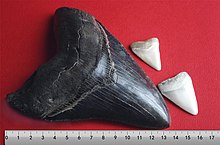


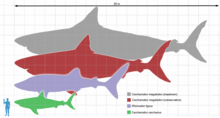
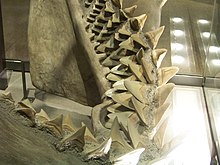

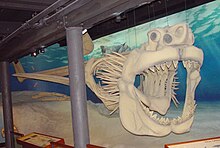
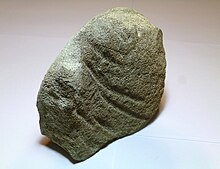
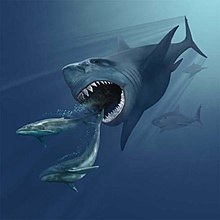
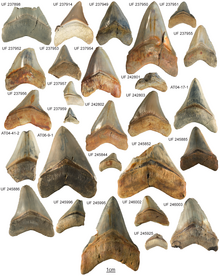
No comments:
Post a Comment